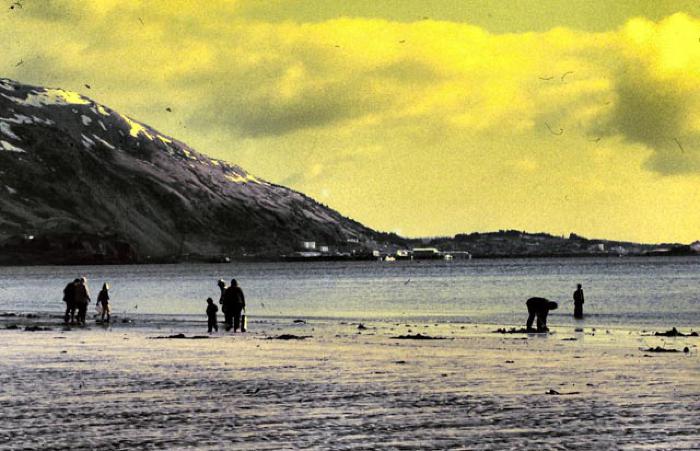Hungry — Kaigluni

Throughout northern environments, late winter and early spring are the leanest times of the year. There are fewer sources of fresh food in this season, and bad weather can make those that are available hard to reach. Moreover, by late winter, food stores from the previous summer are often exhausted. For many of Alaska’s Native peoples, late winter was a time of hunger. The Alutiiq term for this season translates as “cutting the salmon into strips,” a reference to rationing the last pieces of stored fish. Historic sources note that communities managed this period of shortfall by subsisting on intertidal resources.
In February and March, families collected large quantities of shellfish, seaweed, and invertebrates while waiting for the return of sea mammals, birds, and fish to coastal waters. And when ice covered intertidal areas, people resorted to eating clothing and leather items to prevent starvation.
Hunger was also problematic during the early years of western colonization. Native people forced to work for the fur trade had little time to complete the subsistence activities needed to sustain their families through the cold season.
